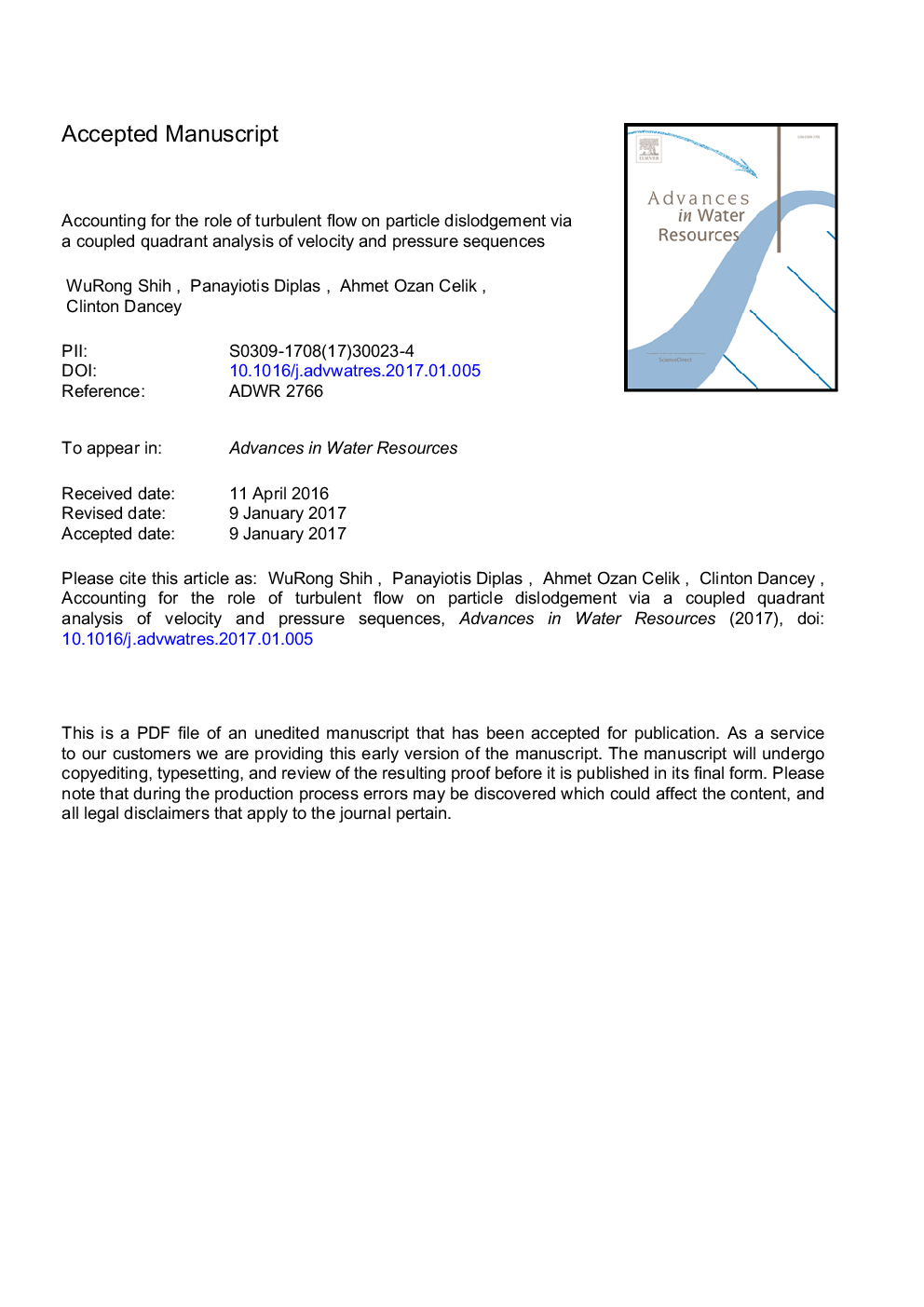| Article ID | Journal | Published Year | Pages | File Type |
|---|---|---|---|---|
| 5763845 | Advances in Water Resources | 2017 | 31 Pages |
Abstract
Recent studies have demonstrated the importance of duration, in addition to magnitude, of energetic turbulent events on particle dislodgement under threshold of motion conditions. It is therefore proposed here that the use of turbulence sequences, instead of single instantaneous extreme events, is more appropriate for characterizing the role of fluctuating velocities and associated hydrodynamic forces on particle mobility. The validity of the proposed method is examined through the detailed analysis of directly measured velocity and pressure data sets. In an effort to relate the results of the conventional velocity quadrant analysis with the instantaneous pressure measurements, the concept of pressure quadrant analysis is introduced. The coupled sequences of the synchronous velocity and pressure quadrant events allow for a more complete description of the local turbulent flow characteristics, including the prevalent coherent structures, and more clear interpretation of their role on particle mobility. It is concluded here that large-scale sweep structures are capable of generating excessive and persistent force fluctuations which are predominantly responsible for the dynamic process of particle dislodgement. This result supports the impulse criterion as the proper way of accounting for the cumulative effect of coherent structures on particle movement.
Keywords
Related Topics
Physical Sciences and Engineering
Earth and Planetary Sciences
Earth-Surface Processes
Authors
WuRong Shih, Panayiotis Diplas, Ahmet Ozan Celik, Clinton Dancey,
